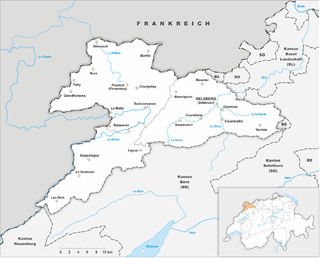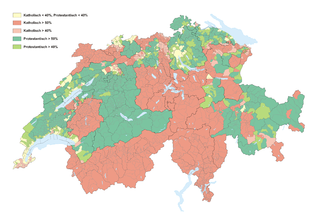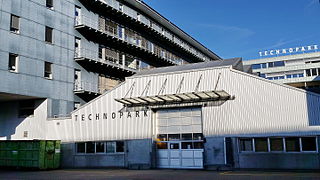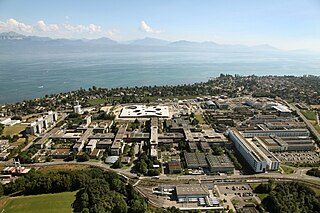Organization
CSEM’s mission is to develop and transfer technologies to the industrial sector to reinforce the sector’s competitive advantage. It works towards building ties between higher education institutions and partners in Industry, and aims to help entrepreneurs with the creation of start-up companies. CSEM’s headquarters are located in Neuchâtel, Switzerland. It also has five sites in the Swiss cities of: Alpnach, Allschwil, Bern, Landquart, and at the Technopark Zürich.
History of its geographical expansion
Over the years, CSEM has expanded its presence and capabilities through the establishment of various research centers.
1997 – Zurich Site. In 1997, CSEM integrated the former micro-optical laboratories of the Paul Scherrer Institut in Zurich, Switzerland. [6] This integration allowed CSEM to broaden its technological offerings while strengthening its presence within Switzerland.
2001 – Alpnach Site. In 2001, CSEM launched a new research center, CSEM Alpnach, in Alpnach, Switzerland. [7] The focus was on generating interactions and exploiting synergy effects in the domain of microrobotics.
2007 – Neuchatel Observatory. In 2007, CSEM integrated the Neuchâtel Observatory into its organization. [8] The primary objective of this takeover was to associate the observatory's Time-Frequency laboratory with the University of Neuchâtel and to continue pursuing fundamental and applied research activities. [9]
2007 – Landquart Site. In the same year, CSEM established another research center, CSEM Landquart, in Landquart, Switzerland. [10] This center received support from the cantonal government of Graubünden and focused on developing new technologies and competencies in nanomedicine while contributing to the economic fabric of the Rhine Alpine Valley.
2022 – Allschwil Site (previously opened in Muttenz in 2011). In 2022, CSEM relocated its Basel site, previously opened in Muttenz in 2011, [11] to the Switzerland Innovation Park in Allschwil, Switzerland. [12] This move aimed to boost CSEM's activities in Tools for Life Sciences.
2022 – Bern Site. Also in 2022, CSEM opened a new office in Bern, Switzerland, located close to the University Hospital Bern. [13] The purpose of this office was to further expand CSEM's activities in digital health, with a specific focus on wearable medical devices. [14]
History
CSEM was founded in 1984 by The Swiss Federal Council. It was created to provide Switzerland with a research and development (R&D) center that would enable the country to keep pace with technological innovation. Presently, CSEM operates as a Research and Technology Organization (RTO). In 1984, the City of Neuchâtel, in the Canton of Neuchâtel, Switzerland, was chosen as the location for the new research and development center due to its long tradition in watchmaking and its heritage in manufacturing industrial, precision, and mechanical components. [15]
CSEM [16] was formed by merging three different companies:
Today, CSEM has over 566 [3] employees, and operates throughout Switzerland.

Switzerland, officially the Swiss Confederation, is a landlocked country located in west-central Europe. It is bordered by Italy to the south, France to the west, Germany to the north, and Austria and Liechtenstein to the east. Switzerland is geographically divided among the Swiss Plateau, the Alps and the Jura; the Alps occupy the greater part of the territory, whereas most of the country's population of 9 million are concentrated on the plateau, which hosts its largest cities and economic centres, including Zurich, Geneva, and Basel.

The 26 cantons of Switzerland are the member states of the Swiss Confederation. The nucleus of the Swiss Confederacy in the form of the first three confederate allies used to be referred to as the Waldstätte. Two important periods in the development of the Old Swiss Confederacy are summarized by the terms Acht Orte and Dreizehn Orte.

The Republic and Canton of Jura, less formally the Canton of Jura or Canton Jura, is the newest of the 26 Swiss cantons, located in the northwestern part of Switzerland. The capital is Delémont. It shares borders with the canton of Basel-Landschaft, the canton of Bern, the canton of Neuchatel, the canton of Solothurn, and the French régions of Bourgogne-Franche-Comté and Grand Est.

The canton of Fribourg, also canton of Freiburg, is located in western Switzerland. The canton is bilingual, with French spoken by more than two thirds of the citizens and German by a little more than a quarter. Both are official languages in the canton. The canton takes its name from its capital city of Fribourg.

Neuchâtel is a town, a municipality, and the capital of the Swiss canton of Neuchâtel on Lake Neuchâtel. Since the fusion in 2021 of the municipalities of Neuchâtel, Corcelles-Cormondrèche, Peseux, and Valangin, the city has approximately 33,000 inhabitants. The city is sometimes referred to historically by the German name Neuenburg; both the French and German names mean "New Castle".

The Protestant Church in Switzerland (PCS), formerly named Federation of Swiss Protestant Churches until 31 December 2019, is a federation of 25 member churches – 24 cantonal churches and the Evangelical-Methodist Church of Switzerland. The PCS is not a church in a theological understanding, because every member is independent with its own theological and formal organisation. It serves as a legal umbrella before the federal government and represents the church in international relations. Except for the Evangelical-Methodist Church, which covers all of Switzerland, the member churches are restricted to a certain territory.

Science and technology in Switzerland play an important role in the Swiss economy, which has very few natural resources that are available in the country. The Swiss National Science Foundation, mandated by the Federal government, is the most important institute for promoting scientific research.

The Swiss Graduate School of Public Administration is a Swiss graduate school of public administration. In 2014, the independent foundation was integrated into the University of Lausanne.

The Swiss Space Office (SSO) is the federal government's competence centre for national and international space matters. In its role it cooperates closely with other federal offices and is responsible for the preparation and implementation of the policy and strategic orientations of the space domain in Switzerland. The SSO is part of the State Secretariat for Education, Research, and Innovation. The Head of the SSO is Dr. Renato Krpoun.

Rail 2000 is a large-scale project of the Swiss Federal Railways (SBB CFF FFS) established in 1987 to improve the quality of the Swiss rail network for the New millennium. It includes measures to accelerate a number of existing connections and the modernisation of rolling stock. The federal government decision to support the project in 1986 was approved by a referendum in 1987. In 2004 the first phase was completed consisting of around 130 projects with a budget of around CHF 5.9 billion.
2. Liga is the sixth tier of the Swiss football league system. The division is split into 17 groups of 12, 13 or 14 teams by geographical region. Teams usually play within their own canton.

The University of Applied Sciences and Arts of Southern Switzerland is one of the Universities of Applied Sciences of the Swiss Confederation. SUPSI offers more than 30 bachelor and master courses, complementing theoretical scientific knowledge and practical technological advances applied to real projects. Various departments of SUPSI are mainly based in Southern Switzerland. Instruction is mainly in Swiss Italian, with some courses delivered in English and German.

Landquart is a municipality in the Landquart Region in the Swiss canton of Graubünden. It was formed when the municipalities of Igis and Mastrils merged on 1 January 2012 into the new municipality of Landquart. The municipality "Landquart" draws its name from a locality in the former municipality of Igis.
The Health Valley covers the Western Switzerland region, where the life sciences sector extends from Geneva to Bern, including the seven cantons of Bern, Fribourg, Geneva, Jura, Neuchâtel, Valais and Vaud. This cluster presents a critical mass of 1,000 companies, research centers and innovation support structures, representing today more than 25,000 employees. The Health Valley strives to animate the life sciences ecosystem of the region, by establishing thriving bridges between its ambassadors.

Technopark Zürich is a technopark research park based in the municipality of Zürich in the Canton of Zürich in Switzerland.

Switzerland Innovation, organised through the Switzerland Innovation Foundation is the Swiss national network of science parks.
The FC Basel 1940–41 season was the forty-eighth season since the club's foundation on 15 November 1893. FC Basel played their home games in the Landhof in the district Wettstein in Kleinbasel. Albert Besse was the club's chairman for the second consecutive season.

Mario El-Khoury is a Lebanese-Swiss engineer, cited as a Digital Shaper by the economic magazine Bilanz in 2020, and among the 100 most important personalities of the Swiss economy in 2019 and 2020.














